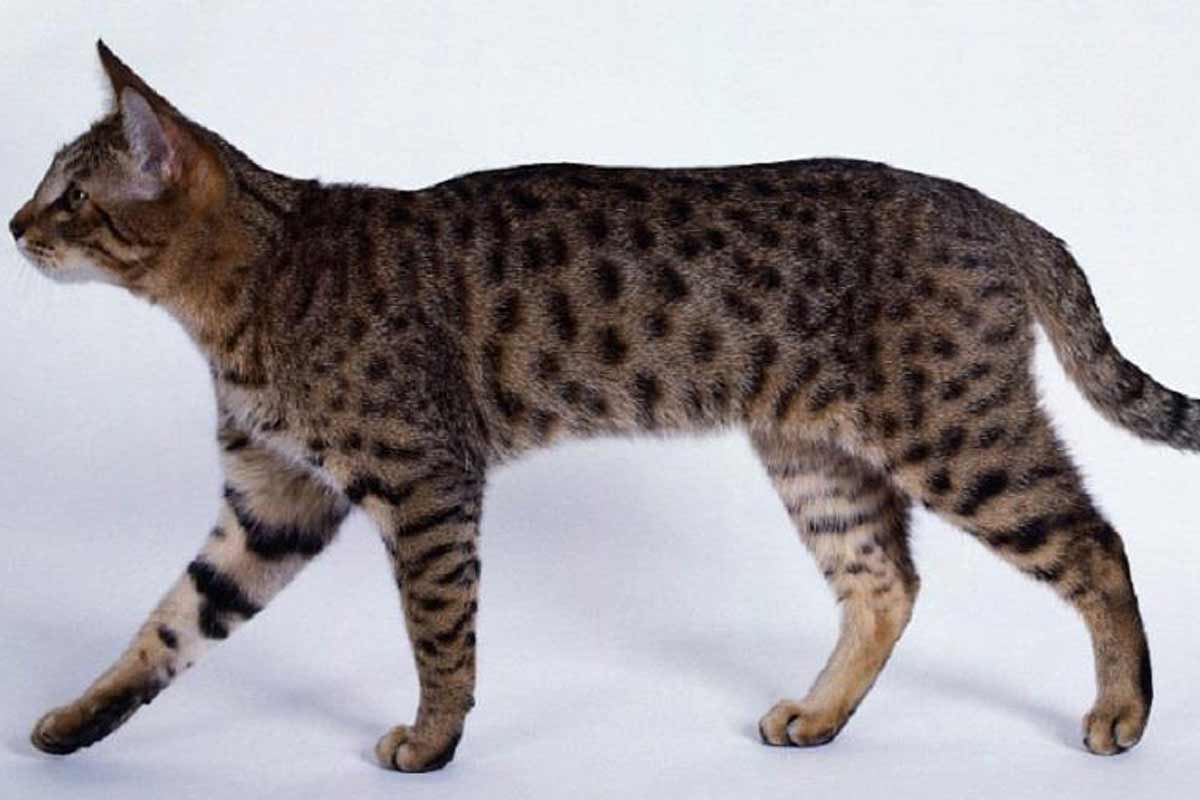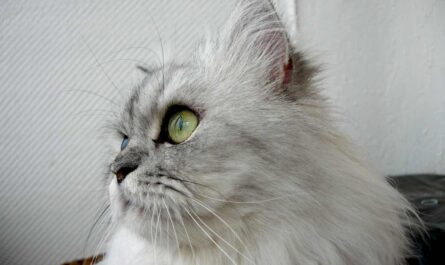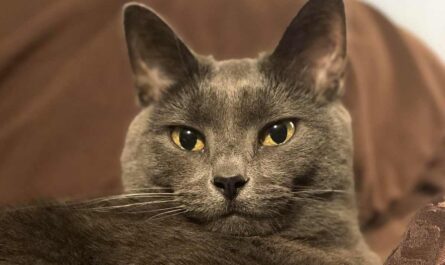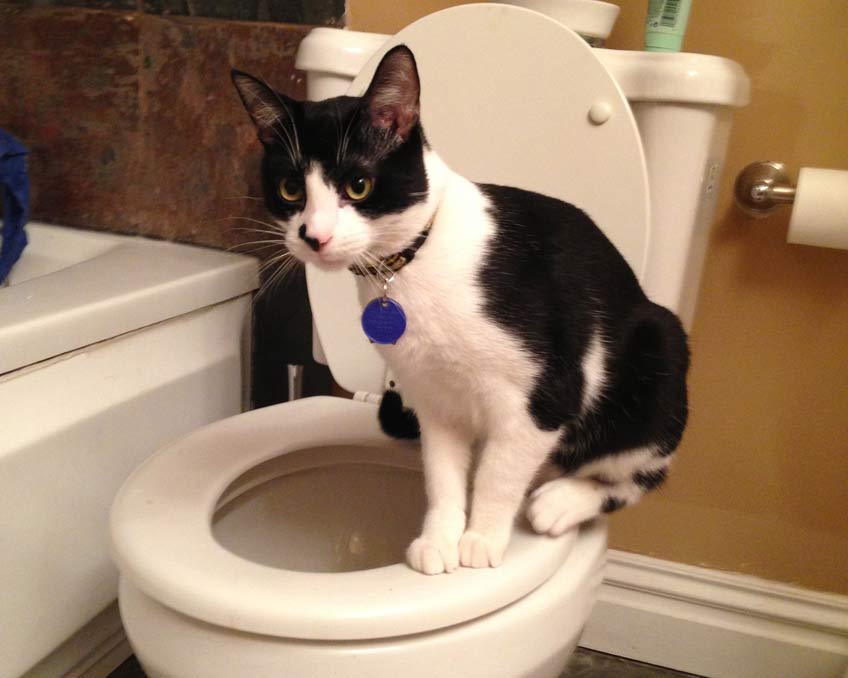How to tell if your cat can’t poop? As a pet owner, dealing with health issues in our beloved animals can be a source of stress and concern. One common problem that many cat owners may encounter is constipation, a condition where a cat struggles to pass stool regularly or at all. When a cat can’t poop, it can indicate various underlying issues ranging from dietary problems to more serious medical conditions. Observing changes in your cat’s litter box habits, such as straining to defecate or producing small, dry stools, can be signs of constipation.
How to tell if your cat can’t poop
It’s essential to approach the situation with care and seek veterinary assistance promptly to properly diagnose and address the root cause of the problem. Understanding the factors contributing to your cat’s constipation and implementing appropriate treatment and preventive measures can help alleviate discomfort and ensure your feline friend’s overall well-being. Here are some ways how to tell if your cat can’t poop:
1. Signs of Constipation in Cats
Understanding Feline Discomfort: Detecting signs of constipation in your beloved feline companion is paramount for maintaining their overall well-being. Constipation manifests when cats encounter difficulty in regularly passing stools. While occasional skipped bowel movements are not uncommon, prolonged constipation can escalate into discomfort and pose serious health risks to your pet.
Observational Cues: Monitoring your cat’s behavior and physical cues can provide invaluable insights into their gastrointestinal health. By attentively observing their habits, you can discern whether they are grappling with constipation.
Behavioral Changes
Altered Activity Patterns: One of the first signs of constipation may manifest in changes to your cat’s activity levels. They may appear lethargic or disinterested in their usual playful activities due to discomfort.
Decreased Appetite: Constipation can often lead to a decrease in appetite as your cat may experience discomfort that affects their desire to eat. Monitoring their food intake can provide clues to their digestive health.
Physical Symptoms
Abdominal Discomfort: Palpating your cat’s abdomen may reveal signs of discomfort or bloating, indicating possible constipation. A distended abdomen or sensitivity to touch in the abdominal area warrants further investigation.
Straining during Defecation: Observing your cat in the litter box may reveal signs of straining or difficulty in passing stool. Excessive pushing or extended periods spent attempting to defecate are indicative of constipation.
2. Changes in Bathroom Habits
Key Indicators: A significant red flag for constipation in cats lies in alterations to their bathroom routines. If you notice a decrease in the frequency of litter box visits or prolonged periods spent attempting to defecate without success, it warrants closer attention. These deviations from their normal patterns may signify underlying constipation issues.
Frequency of Litter Box Visits
Decreased Frequency: A notable change to watch for is a decrease in the number of times your cat visits the litter box. A reduction in frequency may indicate difficulty in passing stool, prompting further investigation.
Extended Time in the Litter Box: If your cat spends an unusually long time in the litter box without producing stool, it suggests they may be experiencing constipation. This prolonged duration may be accompanied by visible signs of discomfort or straining.
Straining and Vocalization
Expressing Discomfort: Another telltale sign is evident when your cat strains excessively or vocalizes discomfort while attempting to pass stool. Such behavior underscores the discomfort and distress associated with constipation, signaling the need for prompt intervention and veterinary care.
3. Reduced Appetite and Lethargy
Loss of Interest in Food: Constipated cats may experience a loss of appetite or show reduced interest in food. This decreased appetite can lead to weight loss if not addressed promptly. It’s essential to observe your cat’s eating habits and intervene if you notice a significant decrease in their food consumption.
Potential Weight Loss: Furthermore, constipation may cause your cat to become lethargic or less active than usual. If you observe a significant decrease in your cat’s energy levels or reluctance to engage in their typical activities, it could be a sign of underlying constipation issues. Weight loss may occur if the constipation persists, as your cat’s body may not be receiving adequate nourishment.
Dehydration Concerns: A reduction in food intake can also lead to dehydration in constipated cats. Monitor your cat’s water consumption and ensure they have access to fresh water at all times. Dehydration can exacerbate constipation and lead to further health complications if left untreated.
4. Dry, Hard Stools
Indicator of Constipation: Examining your cat’s stools can provide valuable insight into their digestive health. Constipated cats often produce dry, hard stools that are difficult to pass. These stools may appear smaller than usual and have a noticeably firm texture. If you notice these characteristics in your cat’s stool, it’s essential to take action to alleviate their constipation.
Accompanied by Straining: Constipated cats may experience discomfort and strain while attempting to pass stool. You may observe your cat spending an extended period in the litter box, accompanied by vocalization or signs of distress. Straining during elimination can further exacerbate the discomfort associated with constipation and may indicate the need for veterinary intervention.
Potential Blockages: In severe cases of constipation, cats may develop fecal impactions or blockages in their digestive tract. These blockages can lead to serious complications, including intestinal obstruction. If you suspect that your cat is experiencing severe constipation or if they have not passed stool for an extended period, seek immediate veterinary attention to prevent further complications.
5. Abdominal Discomfort
Changes in Behavior and Posture: Constipation can cause discomfort in your cat’s abdomen, leading to noticeable changes in their behavior and posture. You may observe your cat adopting a hunched or tense posture, indicating abdominal discomfort. Additionally, your cat may exhibit sensitivity or pain when you palpate their abdomen gently.
Signs of Discomfort: Pay attention to any signs of discomfort or distress your cat displays, as they may be indicative of constipation. Watch for cues such as restlessness, vocalization, or reluctance to be touched in the abdominal area. These behaviors suggest that your cat is experiencing discomfort and may require intervention to alleviate their constipation.
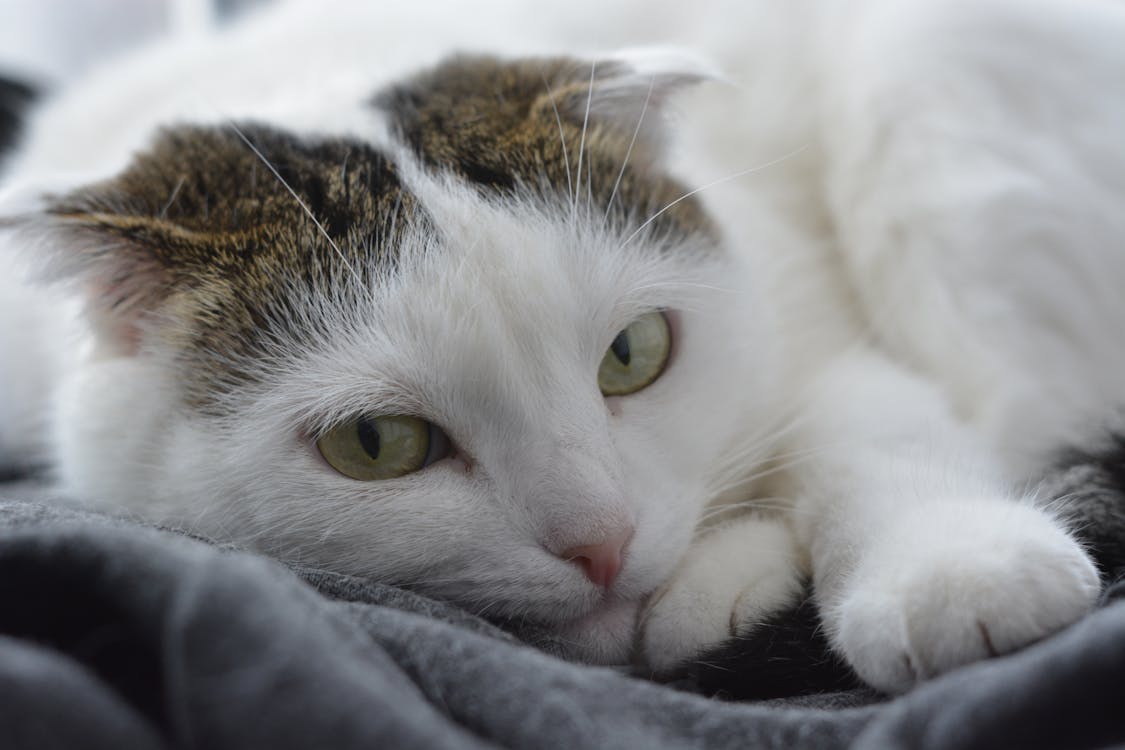
6. Excessive Grooming
Coping Mechanism: Some constipated cats may engage in excessive grooming behaviors as a coping mechanism for discomfort. If you notice that your cat is spending an unusual amount of time grooming their anal area or abdomen, it could be a sign of constipation.
Indication of Irritation: Excessive grooming in these areas may indicate irritation or discomfort associated with constipation and should prompt further investigation. Monitor your cat’s grooming habits closely and consult with your veterinarian if you observe any changes or abnormalities. They can help determine the underlying cause of excessive grooming and provide appropriate treatment for constipation.
7. Vocalization and Restlessness
Expression of Discomfort: Constipated cats may vocalize more frequently than usual, expressing their discomfort or frustration. You may hear your cat meowing, yowling, or crying while attempting to defecate or exhibiting signs of abdominal discomfort. These vocalizations serve as signals of their distress and should prompt attention from their caretakers.
Agitation and Discomfort: Additionally, constipation can cause restlessness or agitation in cats, as they try to find a comfortable position to alleviate their discomfort. Watch for signs of pacing, inability to settle, or frequent changes in position, indicating that your cat is experiencing discomfort associated with constipation.
Seeking Comfort: Cats may seek out secluded areas or attempt to hide when they are experiencing discomfort from constipation. They may retreat to quiet corners or under furniture to find relief from their symptoms. Observing changes in your cat’s usual behavior patterns can provide valuable clues about their well-being.
8. Increased Flatulence
Symptom of Digestive Distress: Flatulence, or the passing of gas, can be a symptom of constipation in cats. When stool becomes backed up in the colon, it can lead to the production of excess gas, resulting in flatulence. If you notice an increase in your cat’s flatulence accompanied by other signs of constipation, such as reduced appetite or straining during defecation, it’s essential to consult your veterinarian for further evaluation.
Dietary Considerations: Changes in your cat’s diet or feeding routine can also contribute to flatulence. Introducing new foods too quickly or feeding high-fiber diets without proper transition periods can disrupt your cat’s digestive system and lead to gastrointestinal issues. Discussing your cat’s diet with your veterinarian can help ensure that they are receiving the appropriate nutrition to support their digestive health.
Potential Complications: While flatulence alone may not always indicate a serious health concern, it can be a sign of underlying digestive issues that require attention. In some cases, constipation can lead to more severe complications such as intestinal blockages or megacolon. Prompt veterinary care is essential to address constipation and prevent further complications from developing.
9. Changes in Litter Box Behavior
Insight into Digestive Health: Monitoring your cat’s behavior in the litter box can provide valuable clues about their digestive health. If your cat avoids using the litter box altogether or shows reluctance to enter it, it could indicate discomfort associated with constipation.
Signs of Discomfort: Additionally, constipated cats may posture in the litter box without producing stool or make repeated trips to attempt defecation without success. These changes in litter box behavior suggest that your cat is experiencing discomfort and difficulty with bowel movements.
Potential Causes: Changes in litter box behavior can also be influenced by factors such as stress, urinary tract infections, or territorial issues. However, when accompanied by other signs of constipation, such as reduced appetite or abdominal discomfort, it’s essential to consider constipation as a potential cause and seek veterinary attention if necessary.
10. Visible Discomfort While Defecating
Straining and Squatting: When constipated, cats may exhibit visible signs of discomfort or distress while attempting to defecate. You may observe your cat straining or squatting in the litter box for an extended period without producing stool.
Vocalization: Some cats may vocalize or cry out in pain during these attempts, indicating that they are experiencing discomfort associated with constipation. These vocalizations serve as clear indicators that your cat requires attention and intervention to alleviate their constipation and prevent further discomfort or complications.
11. Lack of Hydration
Dehydration Exacerbating Constipation: Dehydration can exacerbate constipation in cats, making it essential to monitor your cat’s water intake closely. If your cat is not drinking enough water, their stools may become dry and hard, leading to difficulty passing them.
Encouraging Hydration: Encourage your cat to drink water by providing fresh water sources throughout your home and considering wet food options, which can contribute to their overall hydration. Wet food has higher moisture content compared to dry food, aiding in maintaining hydration levels and supporting regular bowel movements. Motivation – Mind – Success – Thinking – Productivity – Happiness
Observing Water Consumption: Pay attention to your cat’s water consumption habits and ensure that they have access to clean, fresh water at all times. Cats may be more inclined to drink from running water sources, such as fountains or dripping faucets, so consider providing these options to encourage hydration.
12. Changes in Appetite or Weight Loss
Impact on Appetite: Constipated cats may experience a decreased appetite or show disinterest in food altogether. This reduced appetite can lead to weight loss if not addressed promptly. It’s essential to monitor your cat’s eating habits and intervene if you notice any changes in their appetite.
Significant Weight Loss: If you notice changes in your cat’s eating habits or a significant decline in their weight, it’s essential to consult your veterinarian to rule out underlying health issues, including constipation. Weight loss can be a concerning symptom and may indicate more significant health issues that require veterinary attention.
Dietary Considerations: Discuss your cat’s diet with your veterinarian to ensure that they are receiving adequate nutrition to support their overall health and digestive function. Your veterinarian may recommend dietary changes or supplements to address constipation and promote appetite stimulation if necessary.
13. Straining in the Litter Box
Behavioral Indicator: Observing your cat’s behavior in the litter box can provide valuable insights into their digestive health. If your cat spends an extended period straining or squatting in the litter box without producing stool, it could be a sign of constipation. Cat accessories on Amazon
Extended Duration of Straining: Constipated cats may spend an unusually long time in the litter box, often with visible signs of effort and discomfort. This prolonged straining indicates that your cat is experiencing difficulty passing stool and warrants attention.
Vocalization and Discomfort: Additionally, constipated cats may vocalize or display signs of discomfort while attempting to defecate, indicating that they are experiencing difficulty passing stool. Listen for vocalizations such as meowing or crying, which may accompany the straining behavior, and observe your cat’s body language for signs of distress.
Prompt Intervention: If you notice persistent straining behavior or signs of discomfort in the litter box, it’s essential to consult your veterinarian for further evaluation and appropriate management of your cat’s constipation. Ignoring these symptoms can lead to further discomfort and potential health complications for your cat.
Other Interesting Articles
- How To Take Care of A Baby Kitten 2 Weeks Old: 6-Step Guide
- 20 Famous People and Legends Who Loved & Had Pet Cats
- How To Tell If A Cat is Male/Boy or Female/Girl: Tips, Guide
- A Guide to Socializing Shy, Frightened, or Traumatized Cats
- How to Stop A Cat From Spraying Indoors: Home Remedies
- How to Help Cats Get Along with a Kitten Step-By-Step
- How To Tell If Your Cat Has A Triple Coat: 7 Simple Steps
- How To Tell If Your Cat Has Down Syndrome: Signs & Myths
- 11 Signs Your Cat is a Girl: Tips To Distinguish A Female Cat
- Petting A Shy Cat: A How-To Guide, Tips, Dos, Don’ts, FAQs
- How To Tell If Your Cat Has Fleas: Best Tips To Take Care
- How To Tell If Your Cat Can’t Hear: 10 Tips To Help A Deaf Cat
- Why is My Cat Making A Weird Vibrating Noise: What To Do
- How To Tell If A Shy Cat Likes You: 14 Signs To Observe
- How To Stop A Cat From Spraying Outside: 20 Tips To Try
- How To Tell If My Cat is in Pain After Surgery: 17 Implied Signs
- How to Take Care of A Kitten For the First Time: 20 Tips
- 20 Prohibited Things You Should NEVER Do To Your Pet Cat
- What to Know Before Getting a Second Cat: Tips & Guide
- What Scents and Smells Do Cats Hate? How To Deal With
